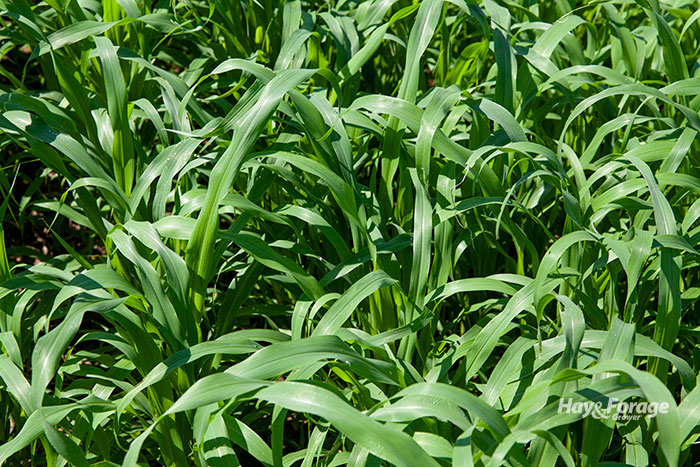
During the dog days of summer, cool-season grasses slack off in productivity, but this period is prime performance time for summer annuals. Supplementing your permanent pastures with summer annuals will help curb forage shortfalls. Rocky Lemus, extension forage specialist at Mississippi State University, recently shared information to help Southeast farmers avert this problem during a forage management webinar.
Be it beef cattle, dairy cattle, or other grazing animals, it is important that you understand the animals’ needs and the expected performance from the summer annual you intend to use. You also need to justify supplementing summer annuals into your forage management plan.
Lemus noted that farmers should not rely solely on summer annuals as a forage source but to use them as a management tool. This caution results from a greater risk of stand failure, limited growth during droughts, and thoughtful consideration of your current forage stands.
The forage specialist mentioned some instances that make justifying the use of summer annuals easier. In case of an emergency forage shortage, these species grow quickly. For double-cropping systems, annual forages can provide ground cover between crops.
Summer annuals can also be used as salvage crops to make use of fertilizer that was applied to a crop that failed earlier in the season. Producers also use them as part of an annual forage rotation. Similar to how cattle and other livestock are rotated on and off pastures, forage species are rotated throughout the year to maximize production.
Lemus shared some options to consider when choosing summer annual species to incorporate into your grazing system.
Brown midrib (BMR):
BMR is a genetic mutation that reduces lignin content, which results in higher digestibility and energy for the animals and leads to improved animal performance. There are three genotypes of BMR traits available, but a BMR6 hybrid most closely matches the yields of conventional counterparts. The BMR trait is available for both sorghum species and millet.
Crabgrass:
This annual acts like a perennial by self-seeding, and it likes well-drained soils ranging from sandy types to silty loams. Grazing can start at 8 to 10 inches but should stop no lower than 3 to 4 inches. Lemus recommended removing animals approximately three weeks before the first expected frost to allow the forage to reseed.
Forage sorghum:
Growing to be 6 to 15 feet tall, forage sorghum is drought tolerant and prefers a well-drained soil with a pH level above 6. This forage species has high yield potential, and it should be grazed once it reaches a height of 30 to 36 inches.
Sudangrass and sorghum-sudangrass:
Sudangrass and sorghum-sudangrass can be used for silage or grazing. Lemus said they are better used as a maintenance feed or for animals with lower nutrient needs, although BMR hybrids are available for improved forage quality.
Millet:
Although millet does not grow as tall as some of the sorghum species, it tillers aggressively and recovers from grazing pressure more rapidly. Plant millet in the spring (April to mid-May) for 80 to 110 productive days.
Teffgrass:
Lemus explained that he does not recommend teffgrass for forage growers in the southern United States; it has high quality potential, but its yield potential in the South is very low. This species is drought-tolerant and can be seeded in many soil types, but it has a very small seed (1.3 million seed per pound).
Below is a planting chart with recommendations for soil types, planting date windows, and seeding depths and rates that was used in the webinar.

“Each of these grasses have unique growth characteristics that require proper management for optimum production while adding flexibility to forage production systems,” Lemus said. “Due to the wide range of summer annuals, their regrowth characteristics, and maturity range, it is critical to carefully select the summer annual species that will best fit your needs, expectations, and production resources,” he concluded.

C.J. Weddle is serving as the 2020 Hay & Forage Grower editorial intern. She currently attends Mississippi State University, majoring in agricultural education, leadership, and communications. She grew up on a farm in Vardaman, Miss., where her family raises sweet potatoes and soybeans.

